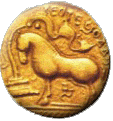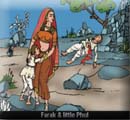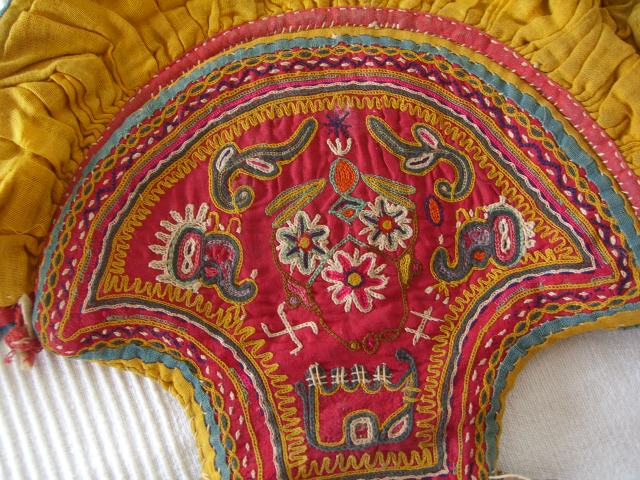History of KACHCHH
The history of Kutch is very old. Traces of the Indus valley civilization (3000 to 1500 B.C.) have been discovered at Dholavira – Kutch. When Alexandra the Great reached these parts in 325 BC Rann was not an arm of the sea. The eastern branch of the Indus emptied itself into the Rann which made it into a fresh water lake.
The Mauryan empire broke of the Gujrat Kutch and Sindh passed under the rules of Greeks from Bactria in 140-120 BC. Bactrian rule over Gujrat, Kathiawad and Kutch was ended by Sakas in the 1st Century and ruled upto the 3rd century. After that Samudragupta attacked the Sakas and ended their rule.
rules of Greeks from Bactria in 140-120 BC. Bactrian rule over Gujrat, Kathiawad and Kutch was ended by Sakas in the 1st Century and ruled upto the 3rd century. After that Samudragupta attacked the Sakas and ended their rule.
 | At the end of the sixth century, the great conqueror king Sahiras of Sindu found Kutch and easy conquest. A Chinese traveller’s evidence shows that Buddhism was in fact declining and Jainism was gaining ground in
Kathiawad and Sindh. |
At the end of the seventh century the Arabs conquered Sindh.Samma Rajputs of the hindu clan settled in Kutch. Some of the chiefs also settled in Sindh and were allowed by the Arabs to be independent rulers there. In the early ninth century the chief of that clan was Lakho Ghuraro, who had two wives.
After the death of Lakho Ghuraro his eldest son Unnad succeeded, but Unnad’s step brother Mod and Manai plotted against him and killed him. Later on Mod and Manai conspired to kill their uncle Vagam Chavda and declared themselves the kings of the area. That time Patgadh was under the rule of seven brothers of the Sandh tribe "Seven Sandhs", who threatened to avenge the murder of Vagam. Later on Mod and Manai killed the seven sandhs and became the masters of the city and of its dependant territories.
At that time Dharan Vaghela was a ruler of these areas. Mod made friendship with him and he got his son Sad married to Dharan’s sister. Mod and Manai’s death in the ninth century weakened Sad’s position. Dharan killed Sad and wanted to kill Ful, Sad’s six month old son, but he was saved.
When Ful grew up he challenged his maternal grand father Dharan Vaghela to combat. Dharan Vaghela by now an elderly man preferred to make peace by giving one of his daughters to Ful in marriage. But Ful never forgot that Dharan had murdered his father.
After a few years, Ful killed Dharan. Hearing this, Ful’s wife committed suicide. She was then pregnant and her unborn infant was brought out alive from her dead body. He was named Ghao (born of the wound). After this incident Ful changed his capital to Angorgadh, near Habai. He married his second wife Sonal from the Rabari tribe who gave birth to a son Lakho in 920 A.D.
Lakho Fulani was a powerful king. He was very famous in Kutch and Gujrat. He shifted his capital to Kera and built a fort. He died fighting on his friend Grahripu’s side at Atkot near Rajkot.
 | After Lakho Fulani’s death his nephew Jam Punvaro succeeded to the throne without opposition. He built a fort called Padhargadh near Nakhatrana. However he was so cruel that the people hated him. Punvaro was killed by the Jakhs. After Punvaro’s death the Solankis and Chavdas ruled over Kutch. |
In the middle of the 12th century a Samma prince named Lakho decided to seek his fortune in the Rann of Kutch. This Lakho had been adopted by a childless Samma chief named Jadeja. Lakho arrived in Kutch in 1147 with his twin brother Lakhiar. By then the Chavda power had decayed and they built themselves a new capital Lakhiarwara, about 20 miles from the ruins of Padhargadh.
After Lakho’s death Rato Raydhan came to the throne. Some Jat tribesmen who had come to Kutch before Lakho Lakhiar gave him trouble. With support of the saint Garibnath Rato Raydhan successfully subdued the Jats and made gifts of the Land of the Dhinodhar monastery to Garibnath.
After the death of Raydhan in 1215 his territories were divided between his four sons. Deda, the eldest one was given Kanthkot, Odha the second son remained ruling Lakhiarwara, Gajan was given Bara and the fourth one Hothi was given twelve villages near Punadi.
| In 1510 Rao Khengarji I descended from the old line of Odha assumed power with the full approval of the Ahmedabad Sultan and took on the title of "Rao". For the next 438 years Kutch was ruled by the Jadeja dynasty till its merger with the Indian Union in 1948. |
|
 rules of Greeks from Bactria in 140-120 BC. Bactrian rule over Gujrat, Kathiawad and Kutch was ended by Sakas in the 1st Century and ruled upto the 3rd century. After that Samudragupta attacked the Sakas and ended their rule.
rules of Greeks from Bactria in 140-120 BC. Bactrian rule over Gujrat, Kathiawad and Kutch was ended by Sakas in the 1st Century and ruled upto the 3rd century. After that Samudragupta attacked the Sakas and ended their rule.




































